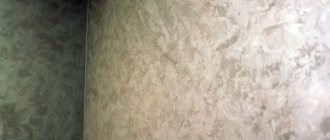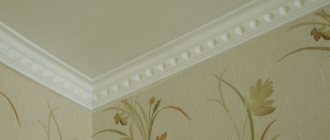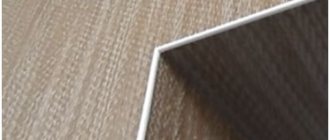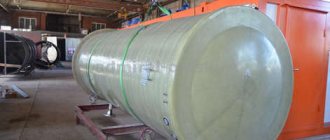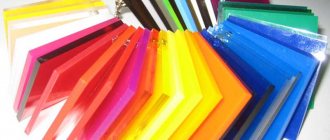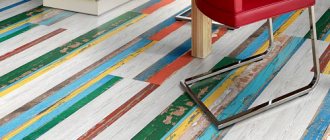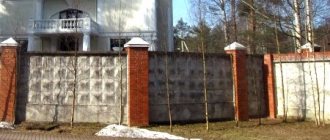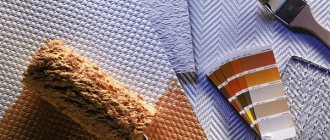Electrostatic spraying is becoming increasingly popular not only due to the aesthetics and durability of the resulting coating, but also due to the ease of application.
Electrostatic painting is a method that allows you to create a uniform protective and decorative layer on metal surfaces. It is one of the most economical in terms of LCI consumption and is characterized by minimal time costs for the full processing cycle. Let's try to figure out how it works and what tools are used.
The essence of the method
If the paint and varnish material is given a negative charge with a high voltage of the order of 60 - 100 thousand volts, the sprayed particles will begin to be attracted to the workpiece, which is previously grounded. The force lines that arise between the surface to be painted and the electrode do not allow the material to deviate from the trajectory, which eliminates the formation of paint mist and significantly reduces losses: from 80 to 98 percent of the material reaches the product.
To ensure forward flow, the flow of liquid droplets or powder granules is accelerated by compressed air. The effect on paintwork materials of hydrostatic pressure and the force of electrostatic repulsion between paint particles forms a paint torch.
Moving along the curved lines of the field, the air-paint mixture goes around the elongated product, spraying on the reverse side, which allows painting in one pass for pipes, angles and other similar rolled products.
Material requirements
When applying paints and varnishes, there are several requirements that must be met to improve quality. The most important element during operation is proper grounding. This is due to safety requirements.
It is especially important to ensure safety during the spraying process of solvent-soluble coatings used in the production process. Substances have an increased likelihood of ignition during operation, so when working with them it is important to carry out safety procedures.
All elements of the spray booth are additionally grounded to prevent the possibility of a spark forming when various substances come into contact that could accumulate a charge. It is also necessary to ground all equipment that can accumulate a static charge.
During the work process, the painter must be grounded. This prevents static charges from accumulating and causing sparks between the painter and objects near the paint job.
In this case, it is necessary to provide:
- Specialized bracelets with grounding.
- Shoes with soles made of leather or similar materials.
- Grounding via the gun handle.
It is also necessary to provide for grounding of the part.
Electrostatic sprayers
Installations that directly apply paint to products consist of three basic elements:
- housings;
- spray head;
- protective casing.
Almost all elements are made of insulating plastic, and conductive plastics are used for the electrical subsystem. The choice of material is determined by the need to protect the operator from electric shock.
Separate channels are used to supply compressed air, paint and voltage.
Electrostatic sprayers come in a wide variety of applications. So only hand pistols there are two types of design:
- classical;
- cascading
The first option is a device to which, according to the traditional scheme, both air and material supply channels and a high voltage cable are supplied. All adjustments to the speed and intensity of paint supply are made: the operator has to interrupt the process and return to the console to make the necessary changes.
The presence of controls on their own body distinguishes pistols made according to a cascade scheme. 12 volt power is supplied to such an instrument via a low-voltage cable, and the high voltage is generated by a built-in transformer. Such devices have another important advantage - voltage stability, which ensures that the entire material receives a charge evenly.
Classic layouts are much cheaper, usually have built-in short circuit protection and are very easy to repair. Cascade - due to the presence of a transformer, they are distinguished not only by their high cost, but also by their relatively large weight, which complicates the work process.
According to the method of transmitting acceleration to paint particles, electrostatic sprayers are divided into:
- pneumatic;
- combined;
- airless;
- cup;
- disk.
The first three types are not fundamentally different; the difference concerns the amount of pressure used, the diameter of the nozzle and the general functionality. Therefore, the application scenarios for guns of these designs are similar, as is the percentage of paint transfer: for most devices this parameter is in the range from 70 to 90.
Cup and disk electrostatic sprayers, also called electromechanical, are characterized by a different principle: paint particles acquire acceleration through centrifugal force. Cup devices are predominantly manual, have a low drive rotation speed - 600 rpm, have the highest transfer coefficient - at least 95 percent, but have low productivity - up to 200 ml/min and are suitable only for niche small-scale production.
Disc machines, on the contrary, offer a rotation speed of about 60 thousand revolutions/min and allow you to obtain a transfer percentage of at least 90. Such devices are installed on automated conveyor lines, for example, for painting car bodies and parts.
About Graco Systems
Graco painting machines provide complete control over the painting process and prevent material loss. Since 1925, the company has become a leader in the production of materials. In this case, high quality coloring is achieved.
The company's painting machine is an optimal technical solution that provides increased comfort during operation. Thanks to the continuous improvement of the technology base, it is possible to provide many solutions. Thus, the devices of the Graco company have several advantages, including:
- Possibility of working with paints and varnishes of high viscosity.
- Covering a large area of the room.
- Saving material.
- Uniform coverage.
We suggest ordering high-quality equipment from our company, which directly cooperates with the manufacturer. At the same time, our specialists are always ready to offer exclusively the best technology options and advice on emerging issues. Order painting equipment from us!
What paint to use
Not every type of coating can be applied using the electrostatic method. The material must have a low level of electrical resistance, not lower than 30 kOhm, otherwise you cannot count on the effectiveness of painting in an electrostatic field. As an example of suitable paints, we can cite compositions with metal powder additives, for example, “Metallic” enamels.
The latest electrostatic painting equipment now allows the use of water-soluble paints, which were previously prohibited due to the risk of short circuiting. However, before using such coatings, you should make sure that the equipment really supports this option: such installations are significantly different from conventional electrostatic ones both in the materials used and in design.
It is also worth noting a separate group of conductive primers, which are necessary to apply paint electrostatically to non-conductive surfaces: wood and plastic. If when processing wooden products you can get by with banal wetting with water, then for plastic such an intermediate layer is simply necessary. When purchasing electrically conductive compounds, you should make sure that the manufacturer has provided for the possibility of use in this capacity.
Use of technology in Russia
Electrostatic painting technology is characterized by many advantages. But in Russian conditions, the use of this type of spraying has not yet found widespread use. The main reason is the lack of a sufficient number of qualified specialists. The equipment itself is quite complex; it needs to be used, and otherwise, instead of electrostatic spraying, the paint will be sprayed using the standard method, which will not give the intended effect. Another problem in Russian conditions will be the search for paints and varnishes with the required level of electrical conductivity.
If the indicator differs from the specified one, it can be used, but in any case, you cannot do without the original information. At the same time, neither sellers nor manufacturing companies are often able to determine the level of electrical conductivity. As a result, the only solution will be to purchase Western-made paints and varnishes, which are much more expensive than their domestic counterparts. Another important factor will be to ensure good grounding. In most cases, this condition is not properly met. In the absence of grounding, the painter will paint not just the surface, but himself.
Please note that it is necessary to say about one popular misconception - most painters believe that the larger the torch, the faster the surface will be processed. But in practice, everything is completely different, and increasing the torch only turns the electrostatic device into a simple spray gun.
Electrostatic type painting naturally has great prospects for use. The required equipment is available for sale, and the technology is well studied. But to become more widespread, the application of paint and varnish material using this method requires special training, and then testing the knowledge in practice.
How to make a spray gun with your own hands?
Often we need to paint something. Moreover, I want to make sure that the paint coating is applied well at home. This result can only be achieved using a spray gun. You can make a similar paint device yourself. It is thanks to him that it is very possible to obtain an even distribution of paint over the surface of an object. Considering the high cost of such a device, creating a simple spray gun with your own hands is the right decision. Let's try to figure out how to make such a device and what you need to know.
Grounding check
Megohmmeter for measuring grounding
The device that is used to measure the continuity of the electrical circuit to the product before grounding is an ohmmeter, which has a megaohm scale. This device can be a regular volt-ohmmeter or a megohmmeter (megger). To measure the electrical resistance of electrical circuits, a conventional volt-ohmmeter uses a low voltage power source (about 9 volts). This tool is sufficient for testing a normal electrical circuit, but is not suitable for testing the grounding of a powder coating system.
The megohmmeter was originally designed to test electric motor windings and wire insulation. This meter is better suited for ground monitoring of a powder coating system as its power source typically provides 250, 500 or 1000 volts. This higher voltage provides the necessary amperage required to measure circuit resistance before grounding in powder coating systems.
Before using this megohmmeter, you must carefully read the instructions for its use and strictly follow them to avoid electric shock, as well as to ensure that you obtain correct electrical resistance measurement results. To check the grounding of the entire powder coating system, two sufficiently long copper wires and two alligator clips are usually used.
How to check grounding
First and foremost, it is important to check the building's grounding to ensure that you have a proper grounding circuit. To check the ground connection point, you need to connect one wire to the ground rod and the other wire to your ground connection point
This ground connection point could be, for example, the conveyor's steel support structure or any metal device that is connected to ground.
To test ground resistance, connect one test lead to a proven building ground and the other to the product mounted on the powder coating system hanger (Figure 3a). From a safety perspective, this ground resistance reading should be no more than 1.0 MΩ. This is the grounding resistance, which includes the entire circuit: the product, hangers, hinges and all conveyor components.
If the grounding resistance exceeds 1.0 MOhm, then you need to move the test wire from the product and connect it to the next element of this “electrical circuit” - the suspension contact (Figure 3b).
If the device reading is still above 1.0 MOhm, then you need to continue testing each subsequent contact point of this circuit - brackets, rollers, chains, guides, etc., until a positive ground resistance measurement is obtained (Figure 3c).
A
b
c Figure 3 – Measurements of electrical grounding resistance: a – on the product, b – on the suspension, c – on the conveyor
By following these steps in sequence, you can pinpoint where the ground is failing and which part of the powder coating system requires cleaning and maintenance.
Making from a ballpoint pen
The simplest and at the same time primitive option for creating a painting device may be a solution based on the simplest ballpoint pen. Naturally, such a tool will not replace a factory spray gun for painting large areas, but for home use it will not be the worst solution.
The advantage of such a spray gun is that it is very easy to make, and construction will take no more than 30 minutes. And it’s easy to use - you just need to blow into the body of the pen so that the paint starts to come out through the rod.
This model of paint sprayer consists of the following components:
First you will need to make a small blank, which will differ in that its lower part must be well and firmly inserted into the paint container. The width of the neck is also important, because the quality of the resulting instrument will depend on this criterion.
After this you will need to make a couple of holes in the upper part. It is better to do this not with an awl, because the holes will be uneven and this will create inconvenience during use. Therefore, it would be better to use a screwdriver for this purpose. The first hole should only be vertical. You can use the lid of the vessel as a stop. After this, you will need to make a hole horizontally so that it intersects with the previous one.
Now you need to immerse the edge of the rod into the vertical channel. And in the second one you should install the handle body. Then you need to pour in the paint, and screw the bottle neck using the cap.
If it is necessary to carry out whitewashing work, then in order to use paints other than water-dispersion type, you can carry out a slight modernization of the tool.
Using such a paint sprayer based on a regular ballpoint pen will require some skills.
In addition, you should understand the intricacies of painting and varnish work. Therefore, to begin with, it will not be superfluous to practice on some unnecessary sheets of paper.
How to remove static electricity from hair and clothes at home
Let me make a reservation right away that if when you touch a dishwasher, washing machine, stove, washbasin or bathtub you get a tickling electric shock, it may not be a matter of static electricity, but a lack of grounding of these parts of your interior.
You can take a multimeter and use it to measure the voltage between the metal parts of the electrically charged device and the ground. If it hits often and unpleasantly, then it may well be 110 volts, which naturally needs to be eliminated yourself or by contacting a housing electrician. It’s not for nothing that you can’t place the stove next to the sink in the kitchen. This is a serious matter - it is better to call the specialists than to suffer the consequences.
Although, on the other hand, if you have accumulated a static charge on yourself, then it could well be discharged on the metal parts of electrical appliances or a washstand. But, if this happens on an ongoing basis, draw conclusions and take measures to counteract negative factors.
The main two ways to combat static electricity at the household level are by moistening or discharging against metal objects.
Synthetic (nylon, lavsan, nylon) clothing rubs against our body, as a result, static electricity is created. When washed, a silk shirt rubs against the metal drum of the washing machine. As for removing a charge from clothing, there are the following tips:
- using antistatic sprays or hairspray, the main thing is not to apply the hairspray where it could damage the material
- refusal to wear synthetics (but this is so-so advice...)
- detergents with antistatic effect
- adding tennis or special balls when washing, or 1-2 tablespoons of table soda
- use of metal hangers, pins for contact with clothing
- if your winter jacket is shooting, wet your hands and run it over it (swipe away the electrons, so to speak, although this is not such a process at all)
- By putting the item in the refrigerator, you will again moisten it, which will beneficially help remove accumulated electrons
If your hair is electrified, it is recommended to perform the following procedures:
- use wooden or metal combs or combs to tidy up your hair
- antistatic for hair, humidifier, wet your hand and pass
- to protect the skin, apply cream to it, you will create a protective layer that will prevent the skin from rubbing against clothing, creating a condition for the release of freely accumulated charge
Plus, ask your loved ones or friends - everyone has their own way of protecting against static electricity.
Pistol Star 3001
As an example, you can take the Star 3001 spray gun. It is designed for the cascade method of producing high voltage.
The manufacturer produces both manual and automatic such devices. Both types of paint sprayers can do both airless spraying and air mixture.
If water-soluble or solvent-based paint is used for painting, then there are certain models for them.
Each modification, taking into account its purpose, can be very different in the materials used, and also has its own unique design.
From this it is clear that the range of electrostatic guns is huge, so before you buy one, you need to know exactly how it will be used. Star 3001 equipment is well suited for working with water-based paints.
This means that the device is protected from short circuits, as it is made of a special material. But to work with solvents, such equipment will not be suitable and you will have to look for another one that will be suitable specifically for such substances.
If there is an issue with the “Faraday circuit” in the spraying equipment, then it can be solved by turning off the device from the power supply.
In this case, the product will be applied and sprayed only under pressure. The button for controlling the flow force is located on the body of the device, it is convenient to use.
And the pressure level is adjusted with one press of a key. In addition, this equipment has a function of remembering the last three field options for certain types of paint.
An important point of any paint material used is resistance.
Along with Star 3001, a probe is included. With the help of which you can determine how electrical resistance the paint has, thus you can find out the best option for the field.
Even with so many technical characteristics, this gun is quite simple to use and easy to monitor its working condition.
The case is easy to open and all the elements can be seen with your own eyes. If any part breaks, it is easy to replace. Thanks to this, repairs can be made easier and cheaper.
It must be said that this device weighs very little, only 900 grams. Thanks to this, it is not difficult to use, it is lightweight, and having a compact handle, it is very convenient. Larius 2 Paint Systems is used on an industrial scale.
This equipment uses a double diaphragm, due to which the paint material is injected at low pressure.
Tribostatic spraying
Tribostatic powder coating technology.
Rice. 4 - Tribostatic spraying - friction charging.
Unlike electrostatic spraying, this system does not have a high voltage generator for the sprayer. The powder is charged during friction.
One of the best acceptors in the triboelectric series is polytetrafluoroethylene (Teflon); it provides good charging for most powder paints, has relatively high wear resistance and is resistant to particle adhesion under impact.
Rice. 5 – There is no Faraday cage effect
In atomizers with tribostatic charging, neither a strong electric field nor an ionic current is created, so there is no Faraday cage effect or reverse ionization. Charged particles can penetrate deep hidden openings and evenly paint products of complex configurations.
Sprayers using tribostatic charging are structurally more reliable than spray guns charging in a corona discharge field, since they do not have elements that convert high voltage. With the exception of the ground wire, these sprayers are completely mechanical, sensitive only to normal wear and tear.
Table. Characteristics of the main types of conversion coatings.
| Type of phosphate coating | Color | Layer (g/m2) | Thickness (µm) | Porosity(%) | Pencil hardness |
| Iron phosphate Fe3(PO4)2 8H2O | Blue | From 0.1 to 0.5 | From 0.1 to 0.5 | From 0.5 to 1 | N |
| Zinc iron phosphate Zn2Fe(PO4)2 4H2O | Moderate gray | From 10 to 30 | From 5 to 15 | From 0.05 to 0.4 | NV |
| Zinc phosphate Zn3(PO4)2 4H2O | Grey | From 2 to 10 | From 1 to 5 | 0.05 to 0.5 | From НВ to >Н |
| Zinc calcium phosphate Zn2Ca(PO4)2 2H2O | Light gray | From 1.5 to 6 | From 1 to 3 | From 0.05 to 0.4 | From НВ to >Н |
| Manganese phosphate (MnFe)5H2(PO4)4 4H2O | Dark grey | From 8 to 40 | From 3 to 25 | From 0.5 to 3 | From B to >HB |
